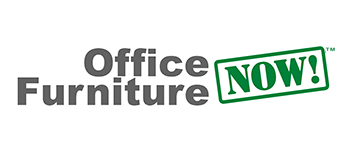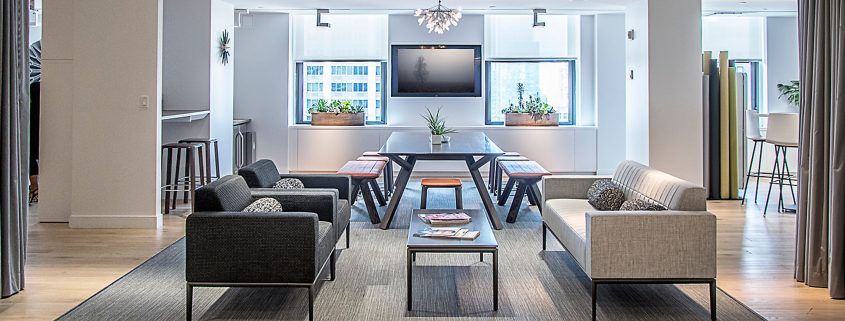The Future Of Work Is Hybrid Workspaces
Hybrid workspaces have been evolving the landscape of workdesign for a good long while now. The vocabulary of companies striving to evolve amidst constant change is expanding. The lure of gradually easing back into a routine that was put on hold has inspired a new level of comfort as an enticement back to work.
For transitional design elements that provide comfort and flexibility, there are two key players: Resimercial design, which embraces the relaxed style of home interiors; and Hospitality design, which has been influencing the coffeehouse culture vibe with open breakout spaces front and center. Both styles are designed to create destinations for enticing casual connecting, meeting, and greeting within the modern workplace culture.
Work-life has been shifting away from being a static utilitarian space by becoming a more feeling space. Every new furniture design and space planning update for over 5 years has drifted toward a more relaxed way of work. To entice employees back to work, a fresh take on the work environment will be needed. One that is more flexible and in alignment with the arrival of new generations to the workforce and their accessibility to positions of responsibility.
One of the flagship trends in office furnishings for 2021 will be replicating the cocooning effect of being at home transposed onto the functional workplace. The HR challenge will be enormous as the office environment must now contribute nearly as much as wages, to employee loyalty. Open plan design must encompass every level of anticipation from private workspaces to collaborative breakout spaces that resemble hospitality lounges, complete with uber modern phone box type privacy booths.
Hospitality Habitats
Truthfully, resimercial design has been flourishing in hospitality spaces for decades. They market the comforts of home to travel-weary consumers around the world. Resimercial design in the workplace has typically been relocated to reception areas, executive offices, and conference rooms. But the lines have become blurred with the creation of makerspaces and huddle spaces that allow collaboration to happen anytime anywhere.
Taking cues from the flexible work environments of coworking spaces, office design must now become a place where synergies are created, new ideas are generated and projects can arise everywhere. The flexible work ethic is essential to the success of hybrid workspace design.
In 2021, every corner will be used to create informal trend-furnished meeting spaces. Accommodating a mix of standing conversational areas with high tables, rooftop garden spaces for flexible work, and reception furniture with expanded seating and sofas, not chairs anymore. The arrangement of space will become more fluid with meeting rooms and private areas incorporated throughout, dictated by the movements of employees and collaborative teams.
Classic office furniture will give way to sprawling living spaces, combined with cozy conversation areas and restful rooms for focus or relaxation.
Environmental Awareness
Sustainable design is very much a part of this trend, the buzz word being: upcycle as much as you can. The era of possession has gradually given way to the era of more respectful consumption. Office design firms, like ours, buy excess furniture in situations like this. It makes good business sense, from an environmental point of view, as well as stimulating companies to develop a sustainable office culture by reducing their ecological footprint as much as possible. This also speaks to streamlining workflows, by design and procedure for efficiency.
The reuse of existing office furniture and the recycling of obsolete furniture accommodates two types of companies: those with limited cash, and those deeply committed to the continuous improvement of their environmental impact. You can also earn LEED points toward sustainable office building by applying these trends.
It can seem like a lot to digest, but investing in a great design firm and a savvy space planner will help you see these things differently. Developing an innovative, inclusive office design can often reinvent the furniture you want to keep by aligning it with a storyline that encompasses your history as a company. This is how you develop a lasting workplace culture. One that will grow with you and enable you to leverage your workspace into an environment that never stops telling your brand story. It just becomes embedded in the work culture as you continue to evolve as a company.
Nothing gets lost, everything is transformed, the brand evolves, and the work culture along with it. When it comes to fitting out a corporate office, large or small, upcycling can also transform existing materials to higher-value products that bring the modern ethos that fresh talent is seeking.
Our team works with businesses at all levels to craft design and furnishing solutions that drive productivity, innovation, and growth. It all starts with an idea and a conversation. We offer a suite of services tailored for adapting to the changing needs of your business. One thing the last few months has taught us all is that adapting to change is in our nature. Our vendors are stepping up to the challenges ahead with gusto. So ask us about the future of work!
 MEET JULIE SHEAFFER: She can help you navigate the changes ahead and keep your workplace connected. If you are ready for a change, contact Julie at 888-910-3769 x 129 or julie@officefurniturenow.com. For more inspiration visit us on Facebook, Pinterest, and Twitter!
MEET JULIE SHEAFFER: She can help you navigate the changes ahead and keep your workplace connected. If you are ready for a change, contact Julie at 888-910-3769 x 129 or julie@officefurniturenow.com. For more inspiration visit us on Facebook, Pinterest, and Twitter!



